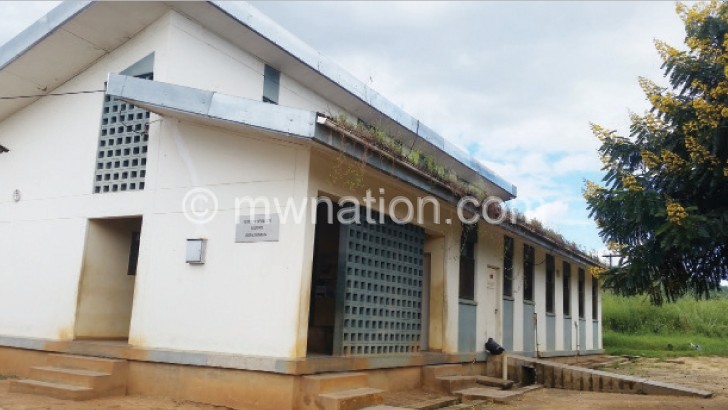Hewe weeps for mothers
A moment of silence! The Mfune family at Hewe in Rumphi is still mourning Agape and her unborn child who died last year.
They say time heals wounds, but the family has not forgotten the pregnant woman. Her grandfather does not want to talk about her because “we are still mourning”.
He is speechless, frustrated by the untimely death as she waited for an ambulance.
Health workers at Katowo Health Centre in Rumphi West referred her to the district hospital after she had had a stillbirth.

But there was no ambulance on standby. The one that serves the rural clinic broke down a year earlier.
Agape waited for hours for an ambulance to arrive from Rumphi District Hospital, almost 60 kilometres away.
But she died before the ambulance arrived.
The tragedy has left her grandfather dumbstruck.
“She didn’t have to die that way,” he says. “Even if I explain how my grandchild died, will that bring her back to life?”
Locals wish the ambulance had arrived on time.
Negligence
Katowo Area Development Committee (ADC) chairperson Charles Chilembo remembers the bereaved family protested, accusing health staff of negligence.
“There is a feeling that the woman would have survived if there was an ambulance to take her to the referral hospital,” he says.
Mercy Chipandula who mourns her mother-in-law Ivy Nyasulu, minces no words.
“My mother-in-law’s death is a mistake. She would not have died if government had equipped hospitals with ambulances,” she says.
The deceased, who visited the clinic for diarrhoeal and severe vomiting, was referred to Rumphi for further treatment.
But the family was told to find means of transporting the sick.
According to Chipandula, it took three hours to source K15 000 to hire a vehicle. As the vehicle sped on the rocky, unpaved road, just a third of the three-hour trip, Nyasulu breathed her last.
“Only if we had departed earlier, our mother would have arrived alive at the district hospital,” bemoans Chipandula.
She wants the Ministry of Health to deploy an ambulance to the hard-to-reach area to prevent unnecessary deaths.
Katowo Health Centre in-charge Tawakavu Gondwe refused to comment on the breakdown of ambulance system.
But Senior Chief Katumbi says several patients keep dying of treatable conditions due transport challenges.
The ambulance meant for the hilly area broke down last year.
Ever since, patients are ordered to find their own means of transport.
Women with maternal complications have to wait for an ambulance from Rumphi.
“This has led to numerous deaths that could have been avoided. The worst affected are pregnant mothers,” says the chief.
Figures at play
In three years, Rumphi recorded 263 deaths of newborns and 35 pregnant women.
The figures have been declining, with 64 newborn deaths and eight maternal deaths last year.
According to district health officer Dr Steven Macheso, the main problem is that the majority of 18 health facilities in Rumphi are hard-to-reach.
He reckons the hilly terrain and poor roads slow down the ambulance system when they refer cases to the district hospital.
“Sometimes, it takes three hours to refer a mother. These issues affect us in the delivery of maternal and neonatal health services in the district,” he said.
Macheso lobbied for more ambulances to be placed in strategic places, including Hewe and Chitimba on the north-eastern shores of Lake Malawi.
“These are strategic places. If we have maternity cases, they can easily access an ambulance,” he explains.
Running costs
Rumphi District Hospital spokesperson Bwanalori Mwamlima said the ambulance that was assigned for Hewe was grounded due to a fuel pump fault which would cost them almost K1.5 million.
“Every time it breaks down, we spend up to K1 million. This time, the hospital will spend more because the ambulance has developed other faults due to its idleness,” he said.
The district, with a population of 208 000, has six ambulances. But four of them broke down.
The hospital receives about K800 000 a month for maintaining its fleet, including five other utility vehicles and 21 motorcycles.
“The allocation is not enough. The fleet itself is old. Only one ambulance and one utility vehicle are new. The rest are old and costly to maintain,” Mwamlima explained.
Way forward
Clearly, the hospital needs a new fleet.
Bestone Chisamile, chief director (administration) in the Ministry of Health, says shortage of ambulances is a national problem.
“It’s indeed a challenge. Once they are procured by government or development partners, they are on the road almost 24 hours daily. Because of this, they experience frequent breakdowns,” he explains.
He says plans are underway to procure new ambulances for constrained hospitals.
Each year, government sets aside funds to procure replacements for ambulances that are damaged or involved in accidents.
But there is need for greater investment to meet a government requirement for one ambulance to serve no more than 50 000 people. In Rumphi, one serves 140 000. n





